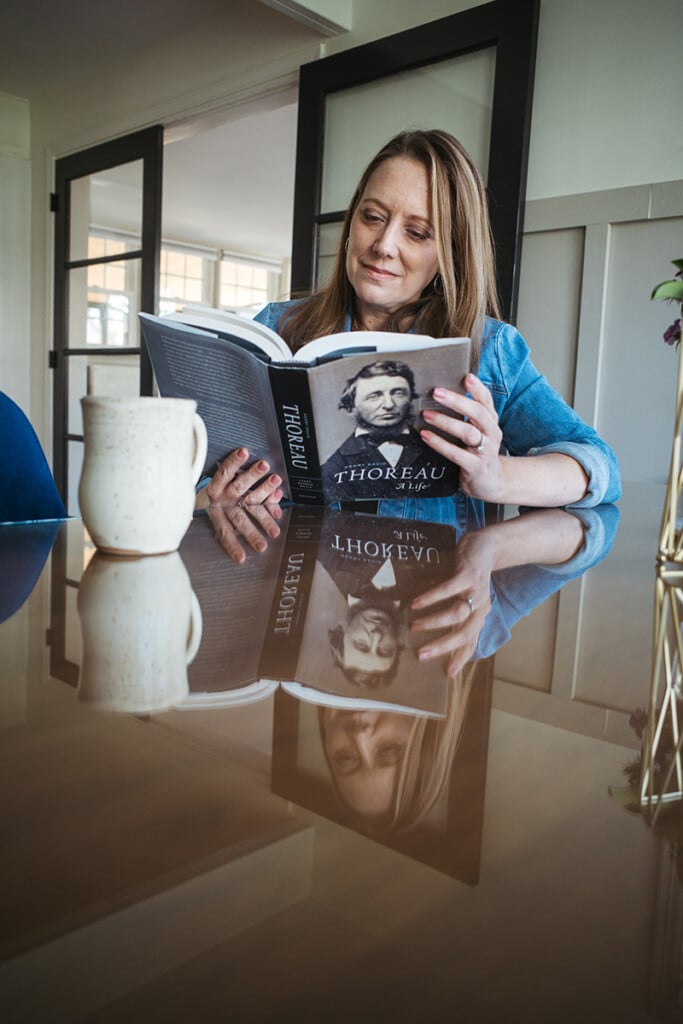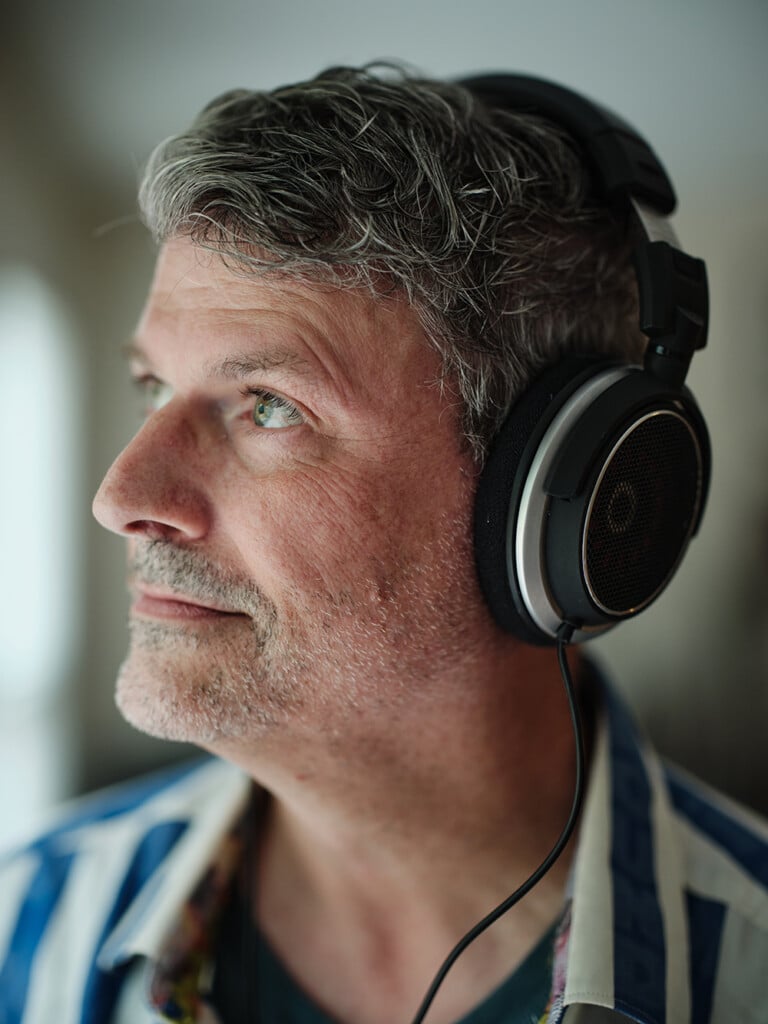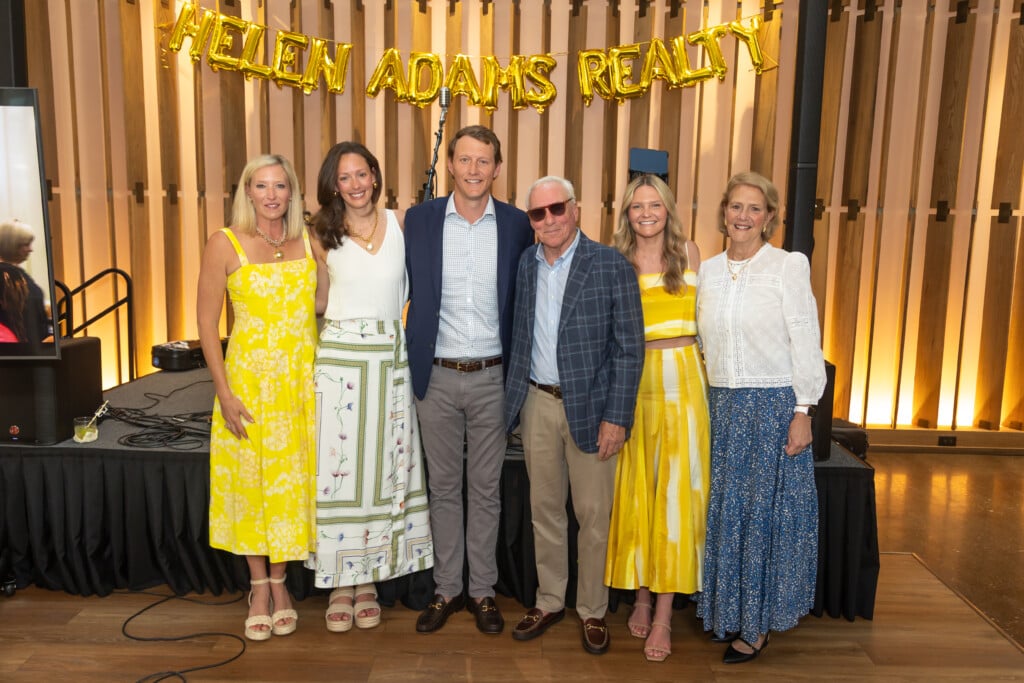For Artist Elizabeth Bradford, Her Family’s Ancestral Home Is Her Studio
She paints her own land preservation

An unfinished work rests on a large easel inside Elizabeth Bradford’s studio. It’s a painting of the Pamlico Sound that Bradford has worked on for hours. At 74, she spends most of her days here, in a studio within a small barn on her family’s ancestral farm. Painting, sometimes en plein air, is her livelihood. She does it in part to honor the spirit of her mother, Mary Stewart Covington Bradford, who painted on occasion and was one of her earliest inspirations. She also does it to record “the beauty of what we’ve been given here on Earth.”
“People have no reverence for grandfather trees that are 250 years old or anything like that,” Bradford says. “So one of the threads of my work is to help develop reverence for those things to cause people to pause, and that’s the only tool I’ve got to fight what’s happening. And I won’t win, but I’m going to do it anyway. I’m going to speak out about it through the work.”
For decades, Bradford has painted colorful, intricately rendered landscapes, features of a natural world she grew to love as a child on this property—the Bradford Farm, a homestead listed among Mecklenburg County’s designated historic landmarks.

Elizabeth Bradford uses a restored cotton barn as her studio. It’s shown here in 1976, soon after she moved onto the property. Courtesy
One of her paternal ancestors began to farm the land in 1769, when North Carolina was still a British colony. Her paternal great-grandfather, William Bradford, bought it in 1890 and turned it into one of the most prosperous farming operations in what was then known as the Ramah community, outside Davidson. Her grandfather, Hurd Grier Bradford Sr., was born in 1896 in a room in the farmhouse, and her father, Hurd Grier Bradford Jr., was born in the same room 30 years later. It’s the room she sleeps in today. She still owns 25 acres.

Left to right: William Bradford, Elizabeth Bradford’s paternal great-grandfather, who bought the Bradford Farm land in 1890; her paternal grandfather, Hurd Grier Bradford Sr.; and her father, Hurd Grier Bradford Jr.
But her desire to record the land’s natural beauty has taken on a new dimension in recent years, as new development driven by housing needs has closed in on her refuge. Bradford lives in one of the fastest-growing parts of one of the country’s fastest-growing cities. The populations of the three towns that comprise North Mecklenburg—Huntersville, Davidson, and Cornelius, along with their unincorporated jurisdictions—have grown more than tenfold in the last 35 years.
The boom continues: As we walk toward the barn on an unseasonably warm winter afternoon, a cacophony of hammers intrudes on our conversation. Visible through a sparse patch of trees is a complex of nearly identical townhomes. “I listened to the sound of bulldozers clearing the land for two years,” she says. “This was 200 acres.” She gazes into the distance. “They carried the entire forest out of here on trucks.”
Bradford was born in Bennettsville, South Carolina. A year or so later, her parents moved the family to Huntersville, 5 miles from Bradford Farm, which they visited often. She learned lessons in self-reliance on the sprawling land, adorned by multiple oaks more than 200 years old. She played dress-up, helped gather eggs and do other chores, and “fished” in the pond with a pole that had a safety pin for a hook. She enjoyed what she still considers the best food she’s ever eaten. “My grandmother made the best buttermilk biscuits,” she says. “The only time we didn’t have them was when she’d make fresh yeast rolls instead.”
Bradford earned a bachelor’s degree in English at UNC Chapel Hill in 1973 and later studied lithography and painting at Davidson College. She moved onto the Bradford Farm property in 1975 and has been there ever since. The following year, she got married. For the next 18 years, she was mainly “a stay-at-home artist mom” of three sons, born in 1981, 1985, and 1990.
In 1994, her marriage broke up. “I was qualified to do nothing,” she says. “I didn’t have a job, I had three kids, and I was terrified.” She returned to school at UNC Charlotte, where she earned her certification as an art teacher—work that allowed her to engage with art every day and still spend time with her children. “It was a wonderful way to recover from a divorce. To go to school and learn every day was a perfect distraction,” she says. “Teaching gave me summers and memories with my children that I really treasure.”
Her smile turns into a more serious expression. “Sure, it was like ramen noodles (for dinner) because I had limited resources, but my kids tell me they learned more from that period in our lives than any other,” she says. “All they knew before that was privilege.”

Firewood, Poke, acrylic on canvas (48” x 60”) displayed this year at Davidson College. Photo Courtesy, Brian Quinby
Bradford worked as an art teacher at East Lincoln High School for 15 years as she continued to paint. Her work was displayed in local and regional galleries, mainly the Christa Faut Gallery in Cornelius. In 2011, she retired and began to paint full time.
All the while, she developed her artistic style, paired with her time in nature. Early on, she was influenced by Impressionism; later, she drew from the example of landscape painters like Alex Katz, Neil Welliver, and Lois Dodd, who explored coastal Maine in the postwar years. Bradford kayaks, hikes, and camps often in the North Carolina mountains. Lately, though, as the growing city intrudes on Bradford Farm, she has to go farther and farther afield to find inspiration: a falcon that guards her nest at sunset, icicles on a blooming pear tree.
“I paint what I’m exposed to,” she says. “For a long time, I was picking my kids up from school every day, and the street the school was on was this charming little old street. So for a year or two, there are all these paintings about that little street. When I was here, early in the ’70s, and there were still farmers around, I was painting their farms and them working on ’em. For a while, I painted my own farm, and then I started backpacking and painting those places.
“I will say this: They provide the most extreme opposition, visually and every other way, to what we’re living in Mecklenburg right now. Going into these wild places with a backpack and a sleeping bag, where you don’t see another soul for three days: That is the extreme—while this county goes to the extreme, you know, this deep dive into paving itself over.”
After we explore the Bradford Farm property, she drives us to her current exhibit, one that displays her urge to capture natural wonders before they’re extinguished. It’s Warp Weft Water Weeds, a collection of 23 acrylic-on-canvas works, most of them recent, at Van Every/Smith Galleries on the Davidson College campus. (The exhibit ran from Feb. 13 to April 9; her next exhibit will be a group show this fall at Cameron Art Museum in Wilmington.)

Elizabeth Bradford first encountered painting through her mother, who painted on occasion when Bradford was a young girl. Photo by Herman Nicholson
The paintings are exquisitely detailed and vivid: She explains that she used to paint in more subtle hues because she didn’t want her work to rely on brilliant color. Then she realized that brilliant color was something she loved and shouldn’t avoid. I admire a particular painting, Dying Poke, that frames a pokeweed’s drooping green and purple leaves against a backdrop of grasses with distinct and intertwining stalks. “I want to amp up the sense of magic I have when I’m in the wild and communicate it to people in the cultivated world,” she says. “Color is a good tool for that. It’s mood-altering.”
That’s a valuable thing for a viewer, one of the distinct pleasures and benefits of art: It can transport your mind and spirit to another place. But shaping the physical, cultivated world, which contains not just falcons’ nests and pokeweeds but subdivisions and townhome complexes? Options are limited. One thing Bradford vows won’t change: The land will remain in the family. But there’s nothing the family can do about all the new homes around it.
“There’s 50 townhomes that I can see 50 feet from my studio, where it used to be just woods. So I’m feeling the pressure, and visually, I’m just looking to get this thirst quenched, this thirst for pure nature, and I’m not able to quench it here too easily,” Bradford says. “But if I can make people stop and think about what we are surrounded by and maybe cherish it in a new way, that would be good for the earth, and I would be gratified and feel like I’ve done my job.”





